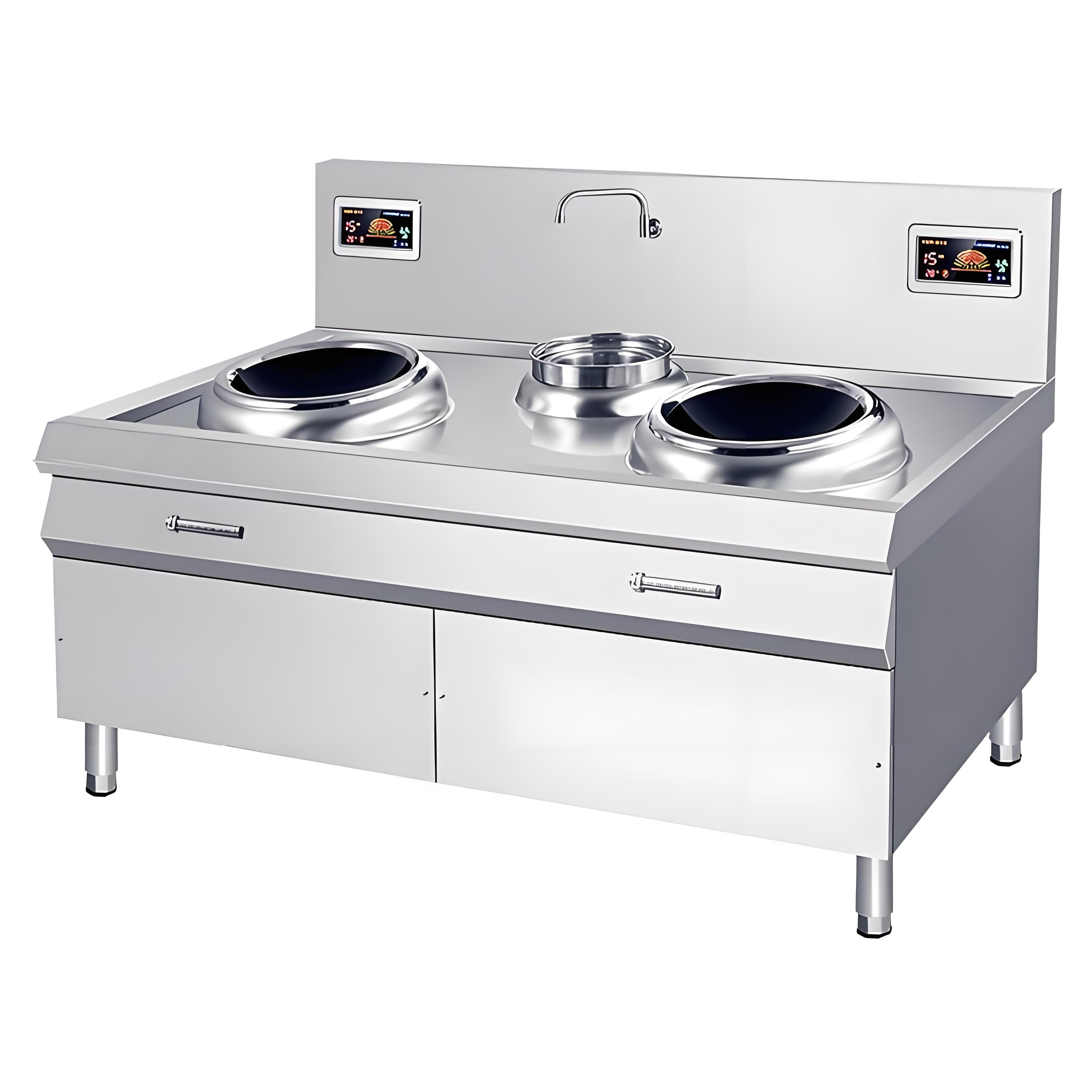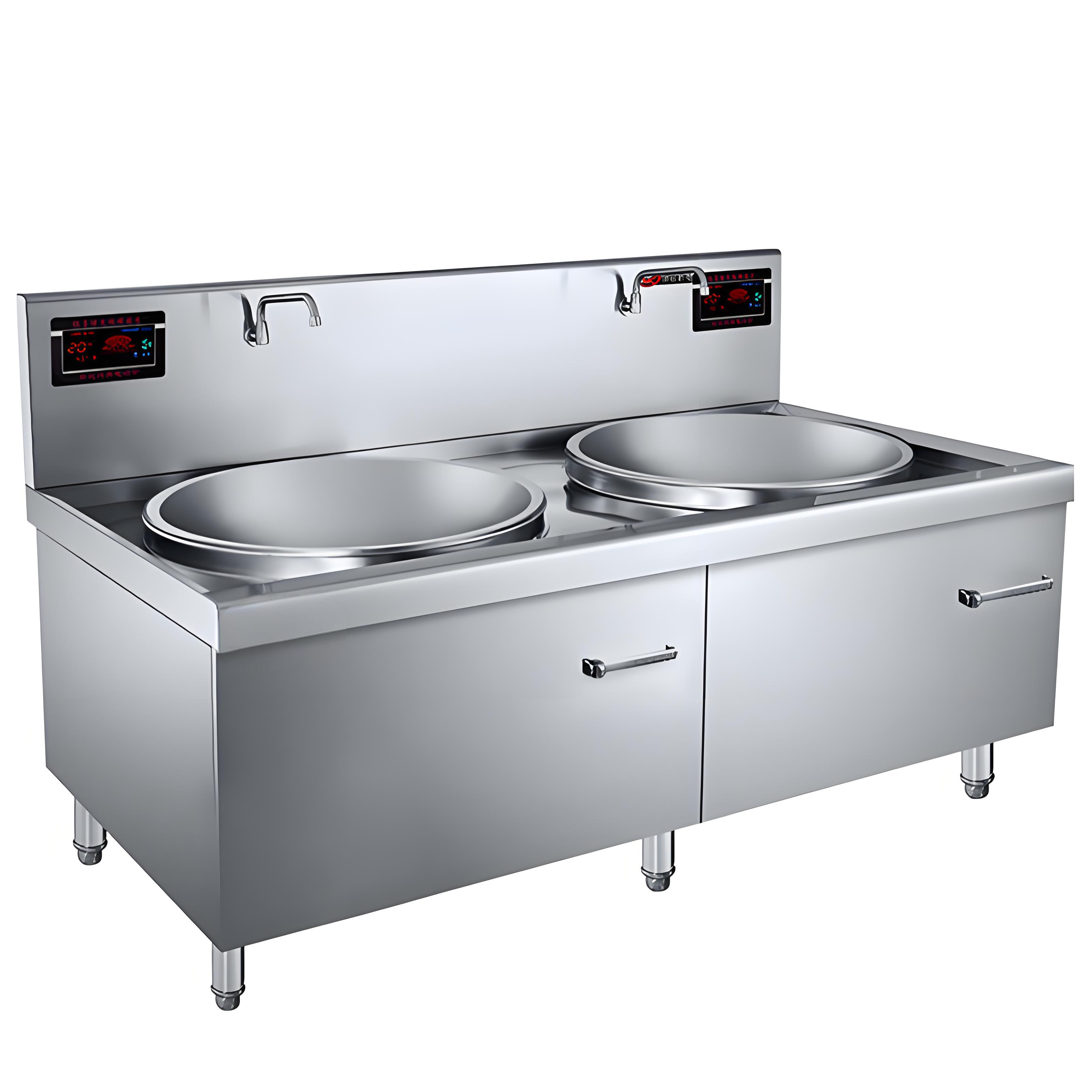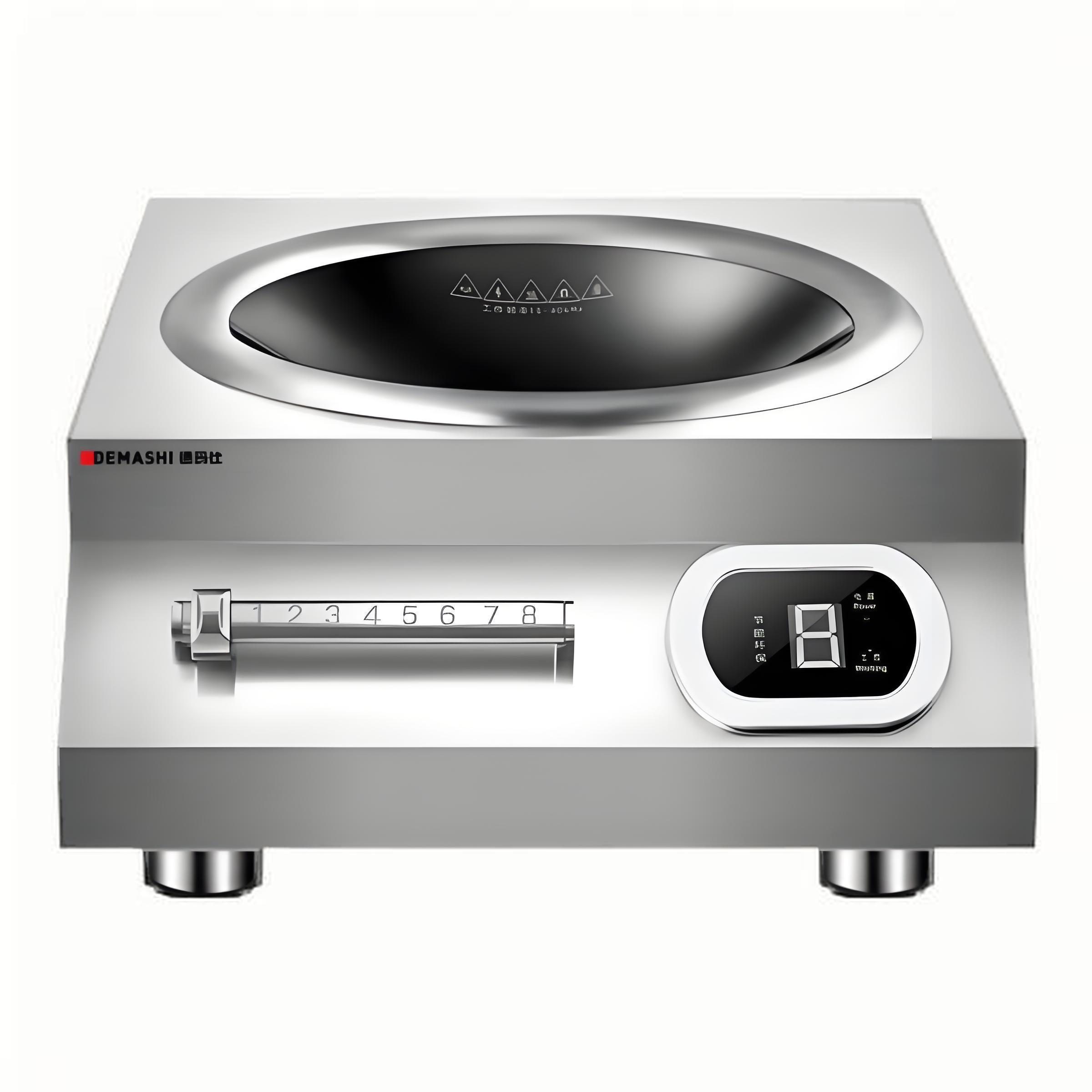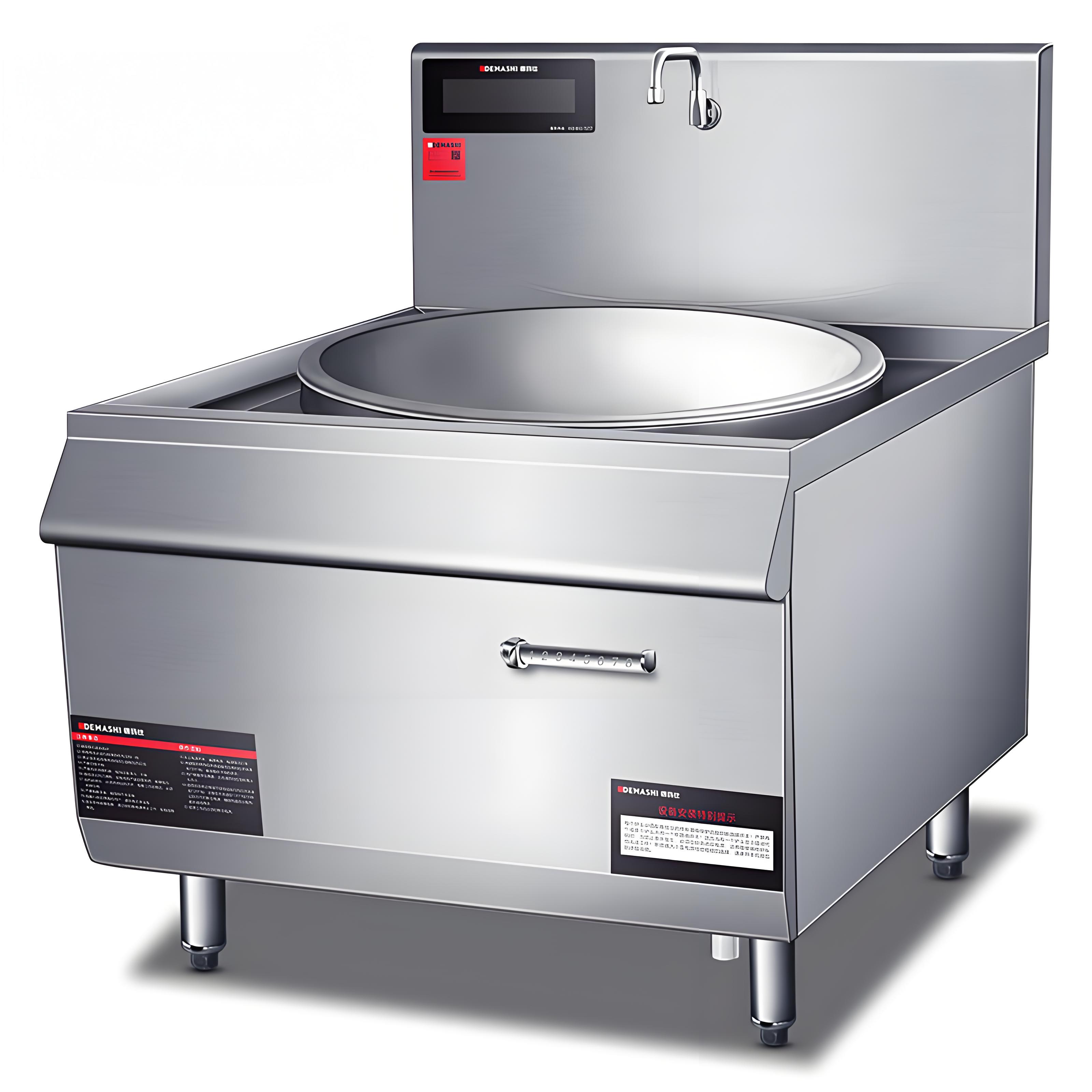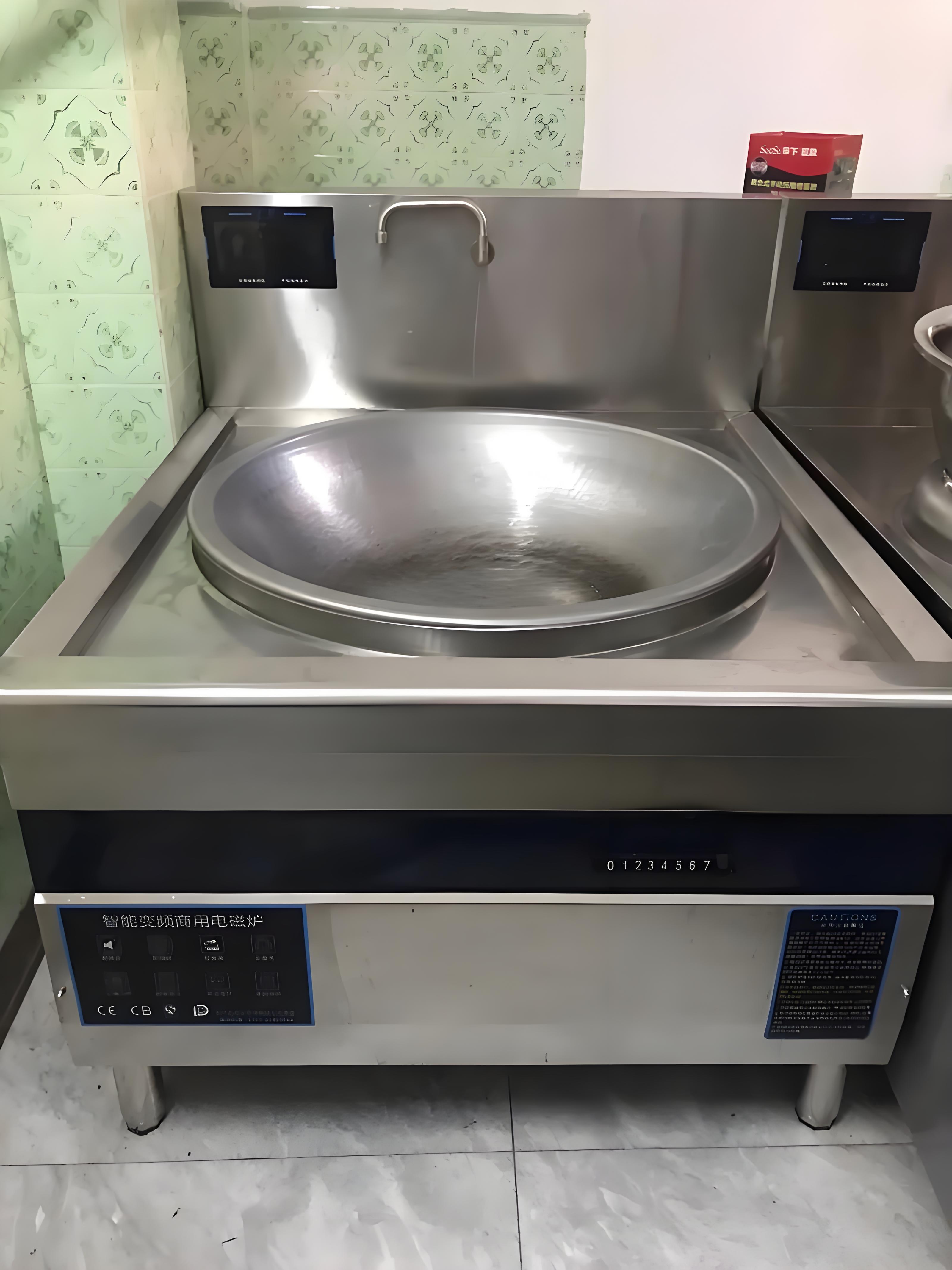As someone who’s spent years advising restaurants, cafes, and catering businesses on kitchen equipment, I’ve seen how commercial induction cooktops can transform a professional kitchen with their speed and efficiency. But one question I hear time and again from clients is: Why do commercial induction cooktop prices vary so much? With prices ranging from $1,000 to over $10,000, the differences can feel baffling. In this article, I’ll share my insights from working with these machines, break down the factors driving price variations, and offer practical guidance to help you choose the right cooktop for your business without overspending.

The Allure of Commercial Induction Cooktops
Commercial induction cooktops are a staple in modern professional kitchens, prized for their fast heating, energy efficiency, and precise control. Unlike gas or electric stoves, they use electromagnetic fields to heat cookware directly, making them ideal for high-volume cooking. But the wide price range can make choosing one a challenge. Is a $10,000 model really worth ten times a $1,000 one? Let’s dive into the reasons behind the price disparities, drawing from my experience in equipping kitchens.
When I first helped a small cafe upgrade to induction, I was surprised by the cost spectrum. Over time, I’ve learned that price reflects a mix of performance, durability, and features tailored to different kitchen needs. Let’s unpack these factors to help you navigate the market.
Key Factors Driving Price Variations
The price of a commercial induction cooktop is influenced by several elements, from power output to build quality and advanced features. Here’s what I’ve found to be the main drivers based on my work with suppliers and kitchens:
1. Power Output and Performance
Commercial induction cooktops vary widely in wattage, which directly affects cooking speed and capacity. Entry-level models might offer 3,000-5,000W across multiple burners, while high-end units can deliver 10,000W or more. Higher power means faster cooking, which is critical in busy kitchens.
Low-End Models: Typically 3,000-5,000W, suitable for small cafes or food trucks with moderate output needs.
High-End Models: Often 8,000-12,000W, designed for high-volume restaurants where speed is paramount.
I once saw a high-end cooktop boil a gallon of water in under two minutes, while a budget model took nearly twice as long. For a restaurant with tight service times, that speed difference justifies a higher price.
2. Number and Type of Cooking Zones
The number of burners and their flexibility impact cost. Basic models might have 2-4 fixed zones, while premium ones offer 4-8 zones with flexible or bridge zones that adapt to large or irregularly shaped cookware.
Low-End: Fixed zones limit versatility, best for standard pots and pans.
High-End: Flexible zones accommodate griddles or oversized cookware, ideal for diverse menus.
In a catering kitchen I worked with, a high-end cooktop’s bridge zones allowed them to use a massive griddle for events, something a budget model couldn’t handle.

3. Build Quality and Materials
Durability is crucial in commercial settings, and high-end cooktops use premium materials like Schott Ceran glass, stainless steel frames, and reinforced internals to withstand constant use. Budget models often use standard ceramic glass and lighter frames, which may wear faster.
Low-End: Functional but prone to scratches or frame damage over time.
High-End: Built to last 10-15 years in heavy-use environments.
I’ve seen high-end cooktops in busy restaurants look nearly new after years, while budget models in similar settings showed cracks or scratches within a couple of years.
4. Advanced Features and Controls
High-end models come packed with smart features, such as touchscreen controls, Wi-Fi connectivity, programmable settings, and precise temperature control (down to 1°C increments). Budget models stick to basic touch or knob controls with preset power levels.
Low-End: Simple controls for basic cooking tasks.
High-End: Features like pan detection, timers per zone, and app integration streamline operations.
I once helped a chef use a high-end cooktop’s app to preset cooking temperatures for a complex dish, saving time during a hectic service.
5. Size and Capacity
Larger cooktops with more burners or wider surfaces cost more. Compact models (e.g., 24 inches wide) are cheaper, while full-size units (e.g., 36-48 inches) for large kitchens are pricier.
Low-End: Smaller units for food trucks or small kitchens.
High-End: Larger units for high-capacity restaurants or catering.
A client running a food truck saved thousands with a compact budget model, while a fine-dining restaurant needed a larger, pricier unit to handle their extensive menu.
6. Safety and Efficiency Features
High-end cooktops often include advanced safety features like pan detection, residual heat indicators, and automatic shut-off, which also improve energy efficiency. Budget models have basic safety features but lack these enhancements.
Low-End: Basic overheat protection.
High-End: Sensors optimize power usage and enhance safety.
In one kitchen, a high-end cooktop’s auto shut-off prevented a potential fire when a pot was left unattended, a feature absent in budget models.
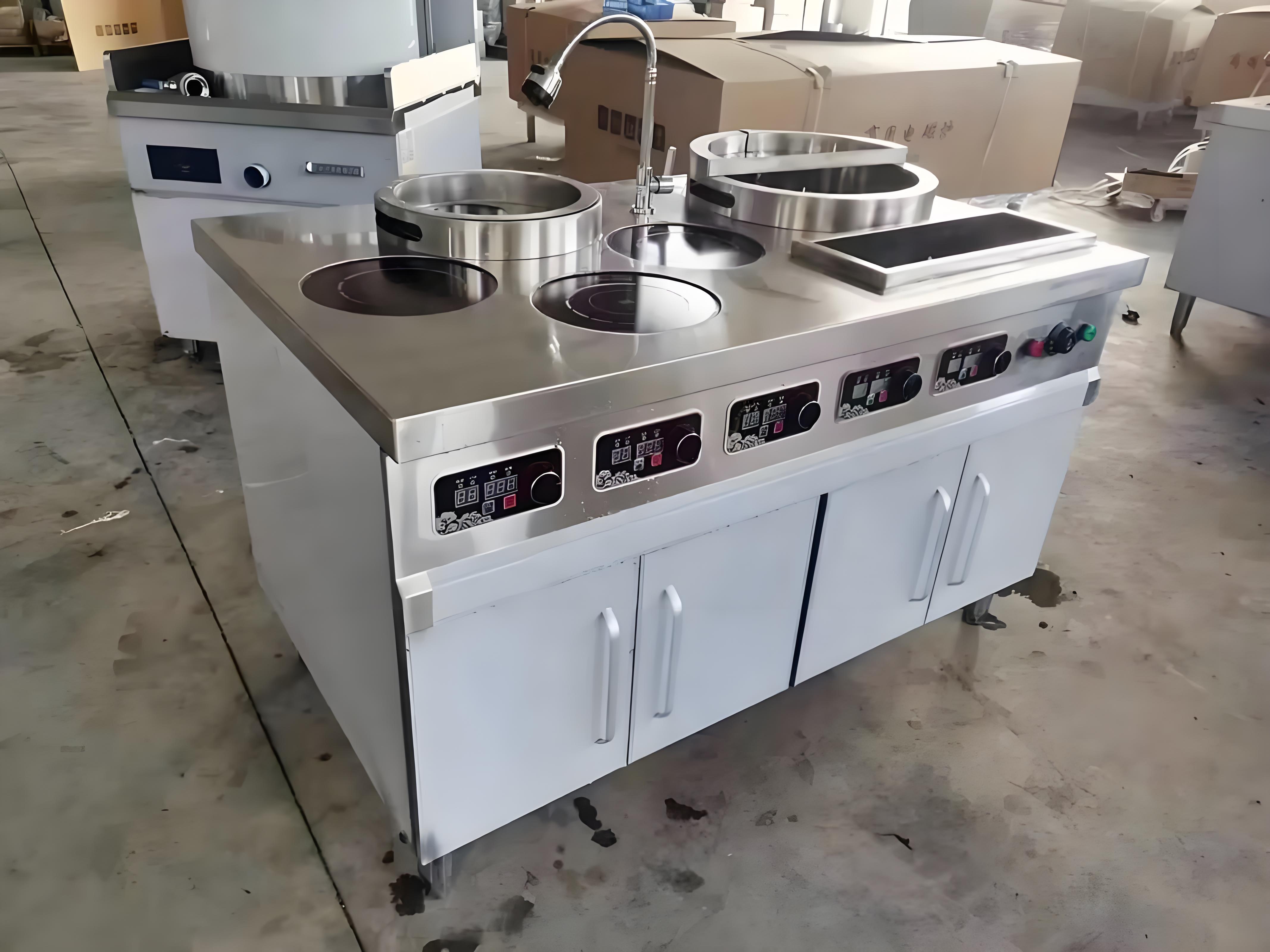
7. Manufacturing Origin
Cooktops made in Europe or North America often cost more due to higher labor costs and stricter quality standards. Models from Asia are typically more affordable but may vary in quality.
Low-End: Often Asian-made with cost-effective production.
High-End: Frequently European-made with premium craftsmanship.
I’ve noticed European models often come with longer warranties, reflecting their durability.
Here’s a table summarizing these factors:
| Factor | Low-End Cooktops | High-End Cooktops | Impact on Price |
|---|---|---|---|
| Power Output | 3,000-5,000W | 8,000-12,000W | Higher power increases cost |
| Cooking Zones | 2-4 fixed zones | 4-8 flexible/bridge zones | More zones add to price |
| Build Quality | Standard glass, basic frames | Premium glass, durable frames | Better materials raise cost |
| Features/Controls | Basic touch/knob controls | Touchscreen, smart features | Advanced tech boosts price |
| Price Range | $1,000-$3,000 | $3,000-$10,000+ | Reflects performance/durability |
Real-World Price Examples
To give you a sense of the market in 2025, here are typical price ranges I’ve seen:
Entry-Level (2-4 Burners): $1,000-$2,500. Compact, basic models for small cafes or food trucks.
Mid-Range (4-6 Burners): $2,500-$5,000. Balanced performance for medium-sized restaurants.
High-End (6+ Burners): $5,000-$10,000+. Advanced features and durability for large kitchens or fine dining.
I helped a small bakery choose a $1,500 model for occasional simmering, while a high-volume restaurant invested $8,000 in a cooktop with flexible zones and smart controls to handle their diverse menu.
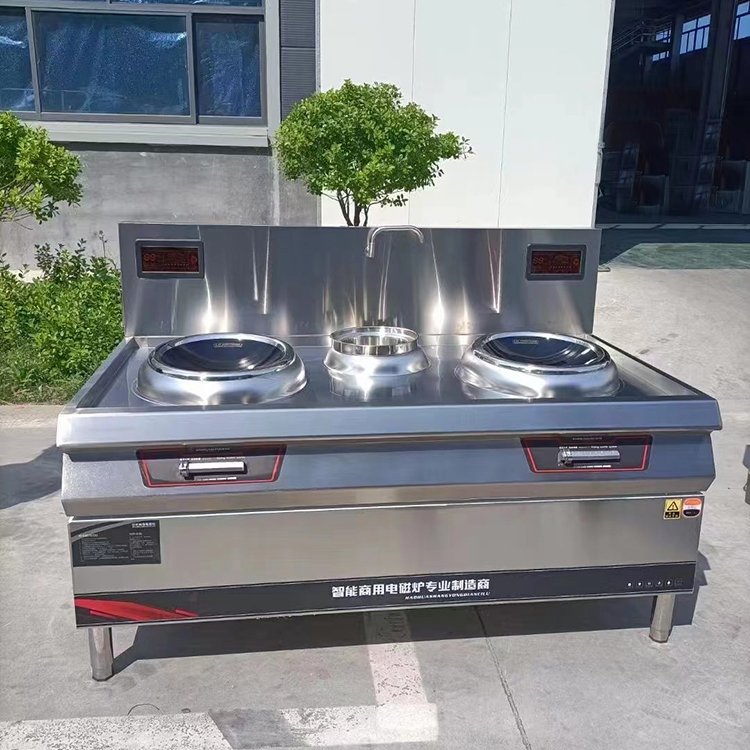
Choosing the Right Cooktop for Your Business
The right cooktop depends on your kitchen’s needs. Here’s how I guide clients:
Small Businesses (Cafes, Food Trucks): A budget or mid-range model ($1,000-$3,000) with 2-4 burners is sufficient for limited menus or low-volume cooking.
Medium-Sized Restaurants: A mid-range model ($2,500-$5,000) with 4-6 burners and some advanced features offers a good balance of cost and performance.
Large Restaurants or Catering: High-end models ($5,000-$10,000+) with high power, flexible zones, and smart features are worth the investment for heavy use.
I once advised a food truck owner to stick with a $1,200 model, saving them thousands for features they didn’t need. Conversely, a fine-dining restaurant’s $7,000 cooktop paid off with faster service and durability.
Practical Tips for Buying a Commercial Induction Cooktop
From my years of sourcing equipment, here are my top tips to get the best value:
Assess Your Menu Needs: High-volume or complex menus require higher power and flexible zones. Simple menus can use budget models.
Check Electrical Requirements: High-end models may need hardwired installation (costing $200-$500), while budget models are often plug-in.
Test in Person: Visit a showroom to try controls and features, especially for high-end models with touchscreens or apps.
Look for Warranties: High-end models often come with 3-5 year warranties, compared to 1-2 years for budget models.
Consider Used Equipment: Certified refurbished high-end cooktops can save 20-40%, but check for warranty and condition.
I once saved a client $2,000 by sourcing a refurbished high-end model with a solid warranty, proving you don’t always need to buy new.
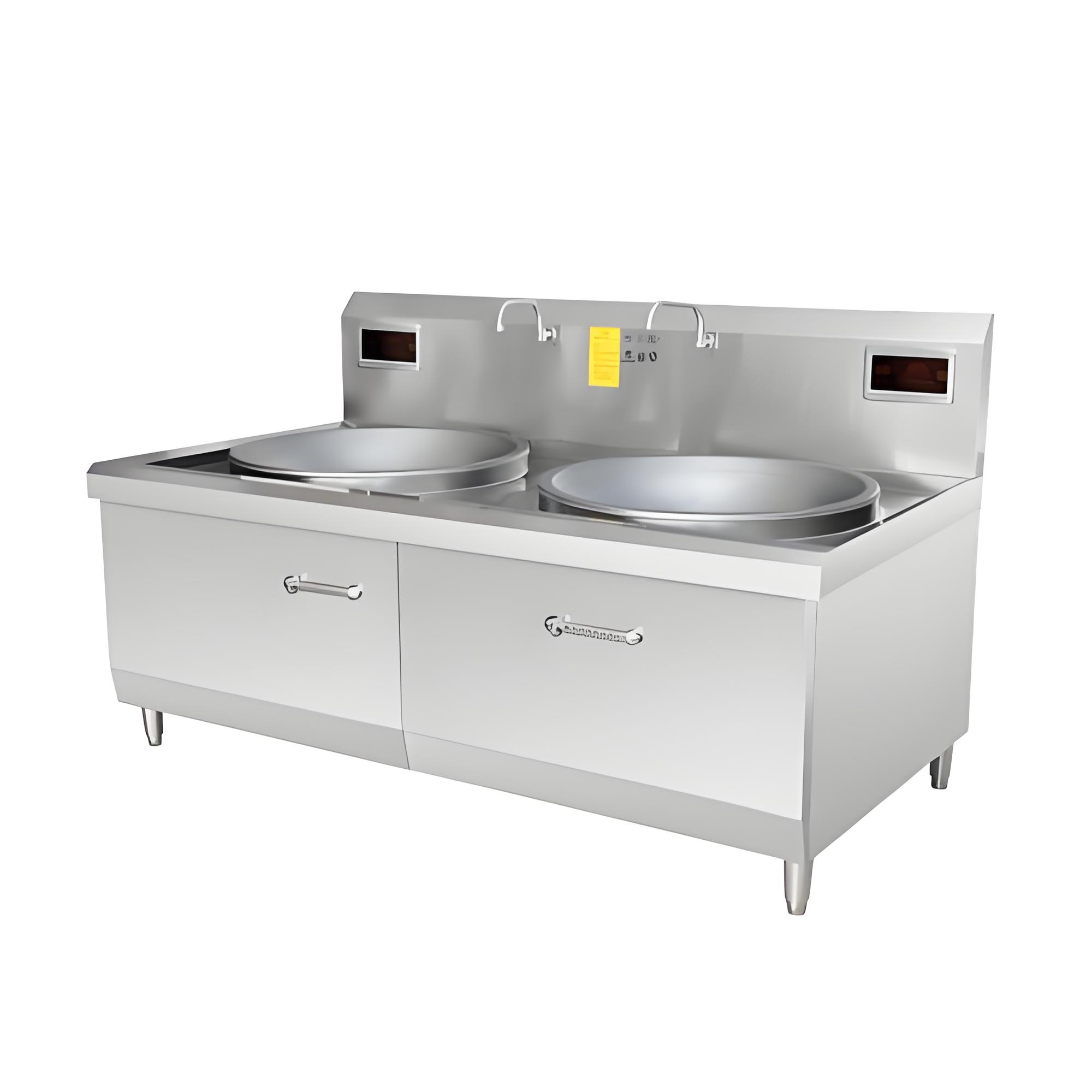
Maintenance and Longevity
Proper care extends a cooktop’s life:
Cleaning: Wipe with a damp cloth and mild detergent. High-end models with premium glass resist scratches better. Avoid abrasive scrubbers.
Regular Checks: Inspect for cracks or loose components, especially on budget models.
Ventilation: Ensure proper airflow to prevent overheating, particularly for high-power units.
High-end cooktops can last 10-15 years in busy kitchens, while budget models typically manage 5-8 years with care. I’ve seen a high-end unit in a restaurant still perform flawlessly after a decade, while a budget model needed repairs after three years.
Cost-Benefit Considerations
Here’s a quick cost breakdown:
Budget Models: $1,000-$3,000, with minimal installation costs ($100-$200). Best for small operations but may need earlier replacement.
High-End Models: $3,000-$10,000, plus $200-$500 for installation. Higher upfront cost but longer lifespan and better efficiency.
For a busy restaurant, the durability and speed of a high-end model can save time and energy costs, offsetting the initial investment. Smaller businesses can thrive with budget models for less demanding tasks.
Real-World Examples from My Experience
Small Cafe: A $1,800 budget cooktop handled daily soup and sauce prep without issues, saving the owner from overspending.
Fine-Dining Restaurant: A $9,000 high-end model with flexible zones streamlined service for a complex menu, impressing chefs and customers.
Catering Business: A $4,500 mid-range cooktop balanced cost and performance, handling large events with ease.
These examples highlight how matching the cooktop to the kitchen’s needs is key to value.
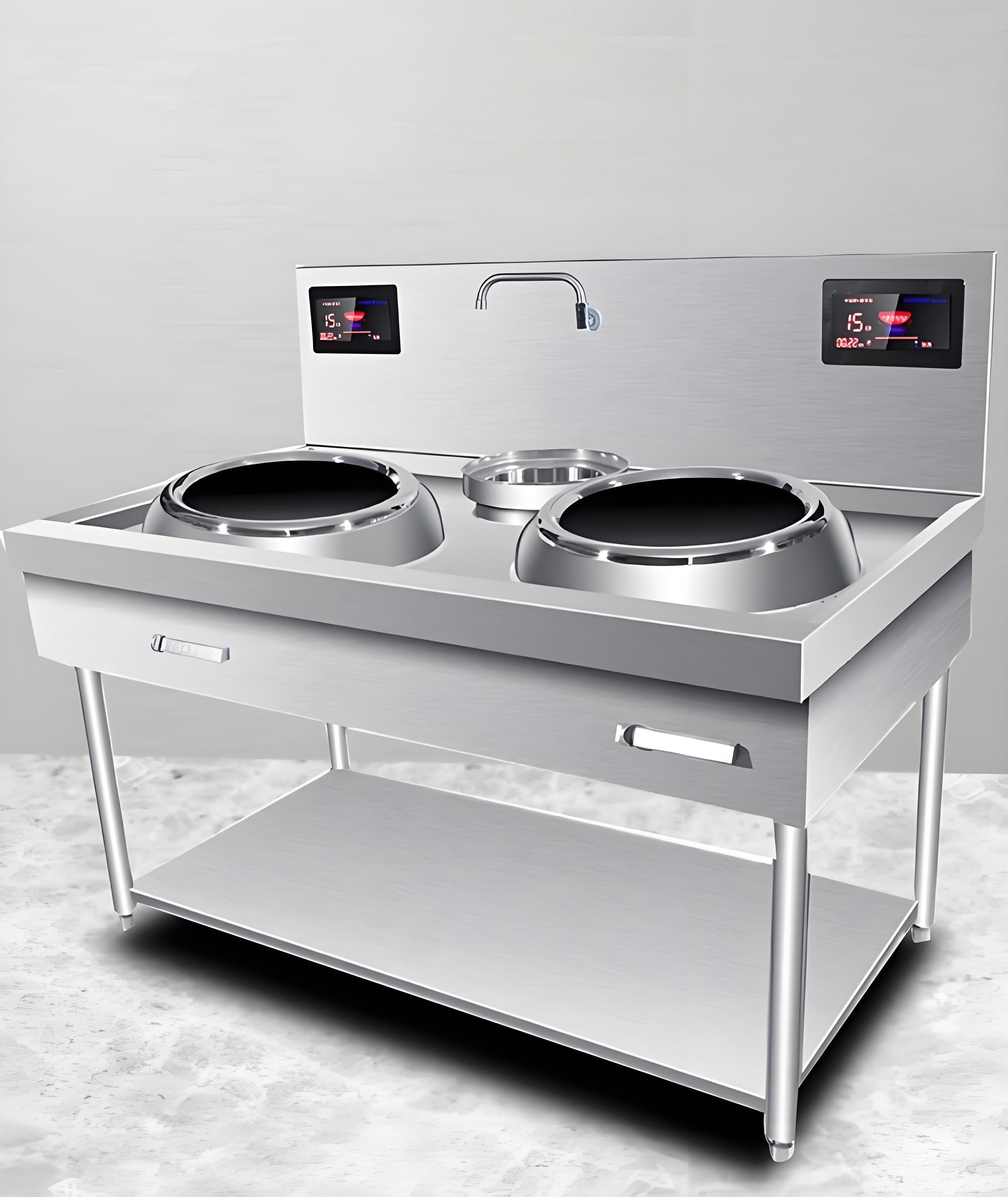
Conclusion: Understanding Price for Smart Choices
The price of commercial induction cooktops varies widely—from $1,000 to $10,000+—due to differences in power, features, build quality, and size. Budget models are great for small operations, while high-end units shine in demanding kitchens with their speed, durability, and advanced tech. By assessing your kitchen’s needs and prioritizing key features, you can find a cooktop that delivers performance without breaking the bank.
If you’re navigating the market or need help choosing the right model, I’m here to share more tips from my experience. Let’s equip your kitchen for success!
Frequently Asked Questions
1. Why are high-end commercial induction cooktops so expensive?
High-end models ($3,000-$10,000) cost more due to higher power (8,000-12,000W), flexible zones, premium materials, and smart features like app control, offering better performance and durability.
2. Can a budget commercial cooktop handle a busy kitchen?
Budget models ($1,000-$3,000) work for small cafes or low-volume tasks but may lack the speed and durability needed for high-traffic restaurants.
3. Do high-end cooktops save money in the long run?
Yes, their 10-15 year lifespan and energy efficiency can offset the higher cost ($3,000-$10,000) compared to budget models’ 5-8 years.
4. What features justify a higher price?
Flexible zones, precise temperature control, smart connectivity, and durable materials (e.g., Schott Ceran glass) make high-end models worth it for complex or high-volume cooking.
5. How do I choose between Asian and European-made cooktops?
European models are pricier but often more durable with longer warranties (3-5 years). Asian models are cost-effective but vary in quality—check reviews and certifications.
